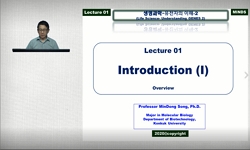Lactic acid is widely used in the food, pharmaceutical, textile and chemical industries. Also, poly-lactic acid (PLA) is in increasing demand as an environmentally friendly and biodegradable plastic. In our prior study, a lactic acid-producing, xylose...
http://chineseinput.net/에서 pinyin(병음)방식으로 중국어를 변환할 수 있습니다.
변환된 중국어를 복사하여 사용하시면 됩니다.
- 中文 을 입력하시려면 zhongwen을 입력하시고 space를누르시면됩니다.
- 北京 을 입력하시려면 beijing을 입력하시고 space를 누르시면 됩니다.
https://www.riss.kr/link?id=A106948866
- 저자
- 발행기관
- 학술지명
- 권호사항
-
발행연도
2020
-
작성언어
Korean
- 주제어
-
등재정보
KCI등재
-
자료형태
학술저널
-
수록면
129-134(6쪽)
-
KCI 피인용횟수
1
- DOI식별코드
- 제공처
- 소장기관
-
0
상세조회 -
0
다운로드
부가정보
다국어 초록 (Multilingual Abstract)
Lactic acid is widely used in the food, pharmaceutical, textile and chemical industries. Also, poly-lactic acid (PLA) is in increasing demand as an environmentally friendly and biodegradable plastic. In our prior study, a lactic acid-producing, xylose-fermenting Saccharomyces cerevisiae strain (SR8 LDH) has been developed. In the present study, we tested the SR8 LDH strain under various fermentation conditions to discover the most important condition determining lactic acid and ethanol production profiles. Using xylose as a substrate significantly improved lactic acid yields compared to using glucose under microaerobic conditions. High initial cell density improved lactic acid productivity, but it did not affect ethanol production. Lastly, when fermenting xylose, the PDC1 gene encoding pyruvate decarboxylase was transcriptionally repressed, which might be associated with the production of low ethanol and high lactic acid. These results indicate that the type of a carbon source, i.e. using xylose instead of glucose could be a promising solution for lactic acid production by engineered S. cerevisiae.
목차 (Table of Contents)
- Abstract
- 1. INTRODUCTION
- 2. MATERIALS AND METHODS
- 3. RESULTS AND DISCUSSION
- 4. CONCLUSION
- Abstract
- 1. INTRODUCTION
- 2. MATERIALS AND METHODS
- 3. RESULTS AND DISCUSSION
- 4. CONCLUSION
- REFERENCES
참고문헌 (Reference)
1 Novy, V., "l-Lactic acid production from glucose and xylose with engineered strains of Saccharomyces cerevisiae : aeration and carbon source influence yields and productivities" 17 : 59-, 2018
2 Verbelen, P., "The role of oxygen in yeast metabolism during high cell density brewery fermentations" 82 : 1143-1156, 2009
3 Ghaffar, T., "Recent trends in lactic acid biotechnology : a brief review on production to purification" 7 : 222-229, 2014
4 Kim, S. R., "Rational and Evolutionary Engineering Approaches Uncover a Small Set of Genetic Changes Efficient for Rapid Xylose Fermentation in Saccharomyces cerevisiae" 8 : e57048-, 2013
5 Yun, E. J., "Promiscuous activities of heterologous enzymes lead to unintended metabolic rerouting in Saccharomyces cerevisiae engineered to assimilate various sugars from renewable biomass" 11 : 140-, 2018
6 Bustamante, D., "Production of D-Lactic Acid by the Fermentation of Orange Peel Waste Hydrolysate by Lactic Acid Bacteria" 6 : 1-, 2020
7 Singhvi, M., "Poly-Lactic acid(PLA) : synthesis and biomedical applications" 127 : 1612-1626, 2019
8 Jamshidian, M., "Poly-Lactic Acid : production, applications, nanocomposites, and release studies" 9 : 552-571, 2010
9 Sauer, M., "Microbial production of organic acids : expanding the markets" 26 : 100-108, 2008
10 Baek, S. -H., "Metabolic engineering and adaptive evolution for efficient production of D-lactic acid in Saccharomyces cerevisiae" 100 : 2737-2748, 2016
1 Novy, V., "l-Lactic acid production from glucose and xylose with engineered strains of Saccharomyces cerevisiae : aeration and carbon source influence yields and productivities" 17 : 59-, 2018
2 Verbelen, P., "The role of oxygen in yeast metabolism during high cell density brewery fermentations" 82 : 1143-1156, 2009
3 Ghaffar, T., "Recent trends in lactic acid biotechnology : a brief review on production to purification" 7 : 222-229, 2014
4 Kim, S. R., "Rational and Evolutionary Engineering Approaches Uncover a Small Set of Genetic Changes Efficient for Rapid Xylose Fermentation in Saccharomyces cerevisiae" 8 : e57048-, 2013
5 Yun, E. J., "Promiscuous activities of heterologous enzymes lead to unintended metabolic rerouting in Saccharomyces cerevisiae engineered to assimilate various sugars from renewable biomass" 11 : 140-, 2018
6 Bustamante, D., "Production of D-Lactic Acid by the Fermentation of Orange Peel Waste Hydrolysate by Lactic Acid Bacteria" 6 : 1-, 2020
7 Singhvi, M., "Poly-Lactic acid(PLA) : synthesis and biomedical applications" 127 : 1612-1626, 2019
8 Jamshidian, M., "Poly-Lactic Acid : production, applications, nanocomposites, and release studies" 9 : 552-571, 2010
9 Sauer, M., "Microbial production of organic acids : expanding the markets" 26 : 100-108, 2008
10 Baek, S. -H., "Metabolic engineering and adaptive evolution for efficient production of D-lactic acid in Saccharomyces cerevisiae" 100 : 2737-2748, 2016
11 Turner, T. L., "Lactic acid production from xylose by engineered Saccharomyces cerevisiae without PDC or ADH deletion" 99 : 8023-8033, 2015
12 Turner, T. L., "Lactic acid production from cellobiose and xylose by engineered Saccharomyces cerevisiae" 113 : 1075-1083, 2016
13 Skory, C. D., "Lactic acid production by Saccharomyces cerevisiae expressing a Rhizopus oryzae lactate dehydrogenase gene" 30 : 22-27, 2003
14 Kim, J. -w., "Lactic Acid Production from a Whole Slurry of Acid-Pretreated Spent Coffee Grounds by Engineered Saccharomyces cerevisiae" 189 : 206-216, 2019
15 Qi, Q., "Industrial Biorefineries &White Biotechnology" Elsevier 369-388, 2015
16 Esteban, J., "Food waste as a source of valueadded chemicals and materials : a biorefinery perspective" 53 : 1095-1108, 2018
17 Lin, C. -Y., "Fermentative hydrogen production from xylose using anaerobic mixed microflora" 31 : 832-840, 2006
18 van Hoek, P., "Fermentative capacity in high-cell-density fed-batch cultures of baker's yeast" 68 : 517-523, 2000
19 Ae Jin Ryu, "Engineering of Saccharomyces cerevisiae for enhanced production of L-lactic acid by co-expression of acid-stable glycolytic enzymes from Picrophilus torridus" 한국화학공학회 35 (35): 1673-1679, 2018
20 Kim, S. R., "Deletion of PHO13, Encoding Haloacid Dehalogenase Type IIA Phosphatase, Results in Upregulation of the Pentose Phosphate Pathway in Saccharomyces cerevisiae" 81 : 1601-1609, 2015
21 Ishida, N., "D-Lactic acid production by metabolically engineered Saccharomyces cerevisiae" 101 : 172-177, 2006
22 Shin, M., "Comparative global metabolite profiling of xylose-fermenting Saccharomyces cerevisiae SR8 and Scheffersomyces stipitis" 103 : 5435-5446, 2019
동일학술지(권/호) 다른 논문
-
- 한국생물공학회
- 권미지(Miji Kwon)
- 2020
- KCI등재
-
- 한국생물공학회
- 유한진(HanJin Yu)
- 2020
- KCI등재
-
고추냉이 추출물에 노출된 Bacillus cereus MK-11의 생리 및 세포반응
- 한국생물공학회
- 이현호(Hyun-Ho Lee)
- 2020
- KCI등재
-
천연 해조류 추출물의 Lipase, Urease, Lipoxygenase 저해와 DPPH 라디칼 소거 활성 및 고등어 (Scomber japonicas)의 저장성에 미치는 영향
- 한국생물공학회
- 정소미(So-Mi Jeong)
- 2020
- KCI등재
분석정보
인용정보 인용지수 설명보기
학술지 이력
| 연월일 | 이력구분 | 이력상세 | 등재구분 |
|---|---|---|---|
| 2022 | 평가예정 | 재인증평가 신청대상 (재인증) | |
| 2019-01-01 | 평가 | 등재학술지 유지 (계속평가) |  |
| 2016-01-01 | 평가 | 등재학술지 선정 (계속평가) |  |
| 2015-12-01 | 평가 | 등재후보로 하락 (기타) |  |
| 2011-01-01 | 평가 | 등재학술지 유지 (등재유지) |  |
| 2009-08-28 | 학술지명변경 | 한글명 : 한국생물공학회지 -> KSBB Journal외국어명 : Korean Journal of Biotechnology and Bioengineering -> Korean Society for Biotechnology and Bioengineering Journal |  |
| 2009-01-01 | 평가 | 등재학술지 유지 (등재유지) |  |
| 2007-01-01 | 평가 | 등재학술지 유지 (등재유지) |  |
| 2005-01-01 | 평가 | 등재학술지 유지 (등재유지) |  |
| 2002-01-01 | 평가 | 등재학술지 선정 (등재후보2차) |  |
| 1999-07-01 | 평가 | 등재후보학술지 선정 (신규평가) |  |
학술지 인용정보
| 기준연도 | WOS-KCI 통합IF(2년) | KCIF(2년) | KCIF(3년) |
|---|---|---|---|
| 2016 | 0.37 | 0.37 | 0.38 |
| KCIF(4년) | KCIF(5년) | 중심성지수(3년) | 즉시성지수 |
| 0.37 | 0.36 | 0.662 | 0.02 |





 DBpia
DBpia




